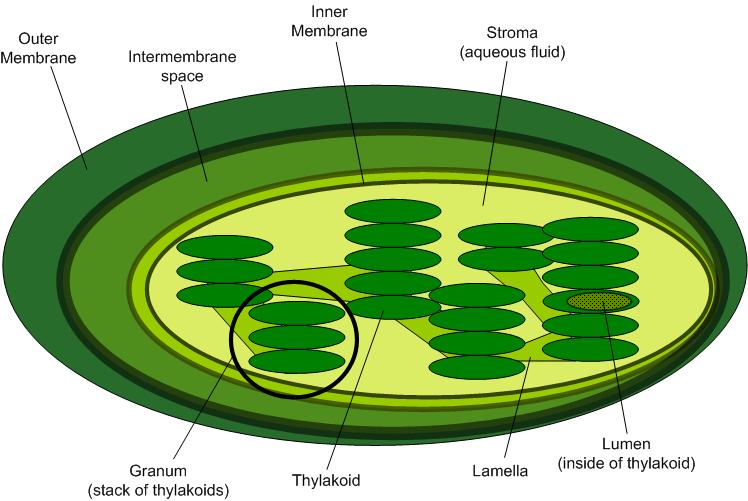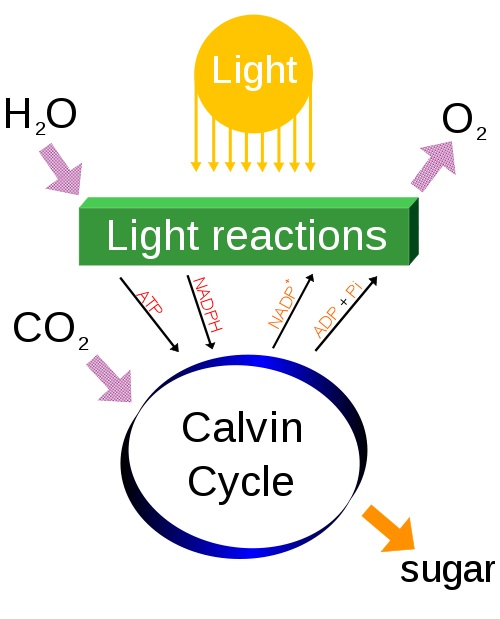Nutrition
Dendrobium officinale is part of the plant kingdom and in fact undergoes the process of photosynthesis. Like other plants, D. officinale takes in carbon dioxide , water, and sunlight to produce sugar, oxygen, and water. The sugar created is called sucrose, which is a sugar that the orchid can utilize in cellular respiration. The oxygen produced can be used by other organisms, much like ourselves.
Photosynthesis occurs in the chloroplasts
which are mostly within the leaves of the orchid. First, the
stomata open to allow carbon dioxide into the leaves, and
chlorophyll within
chloroplasts absorb the sunlight.
Within the chloroplasts there are
thylakoids
which do the light dependent reactions. Inside the thylakoids
the carbon dioxide, water, and sunlight begin the photosynthesis
process. In the first steps of photosynthesis, NADPH, a
five carbon sugar, and
ATP are formed which pass into the
stroma and onto the
calvin cycle. Once in the
stroma the five carbon sugar undergoes a cycle which transforms
that five carbon sugar into a usable sugar for the plant.
absorb the sunlight.
Within the chloroplasts there are
thylakoids
which do the light dependent reactions. Inside the thylakoids
the carbon dioxide, water, and sunlight begin the photosynthesis
process. In the first steps of photosynthesis, NADPH, a
five carbon sugar, and
ATP are formed which pass into the
stroma and onto the
calvin cycle. Once in the
stroma the five carbon sugar undergoes a cycle which transforms
that five carbon sugar into a usable sugar for the plant.

Water is brought up to the other plant
organs through the use of
xylem. First water is taken in
by the root hairs and drawn through the dermal tissue
(epidermis/skin), into the ground tissue, and finally into
xylem. Once in the xylem, the water can travel up the stem into
the leaves that are photosynthesizing. This water doesn’t move
the way that you may assume, instead of being pushed up the stem
by water pressure in roots, it is pulled up. When the stomata
open to allow carbon dioxide to enter the leaves, water is
released. The droplet of water released then causes the root
hairs to pull in another droplet of water. The water is
literally pulled up the orchid!
Now that water has moved up to the leaves
to allow photosynthesis, the sucrose needs to move to the cells
in the roots. The sucrose is transported down the stem through
the use of vascular tissue called
phloem. The phloem is
composed of cells called sieve tube members which don’t have any
nuclei! Sieve tube members need some help;
so, they have cells
called companion cells which do have nuclei and lots of
mitochondria that take over the metabolism for the sieve tube
members. Sucrose can therefore can travel down from the leaves
to roots and provide sugar to the rest of the orchid.
To learn how Dendrobium officinale reproduces check
out my Reproduction page!
Return to Home page.

